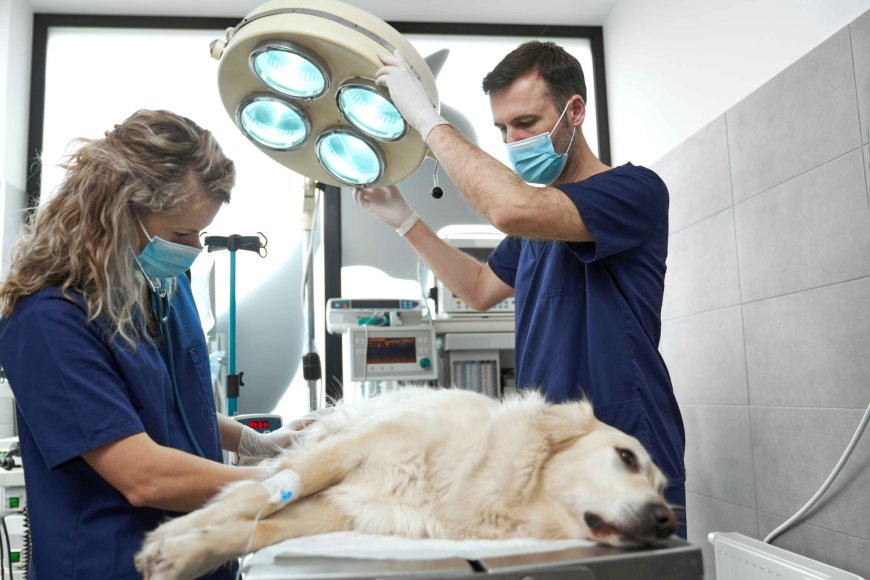Vet Poison Control: How to Keep Your Pet Safe from Common Household Hazards
Vet Poison Control

Our pets are part of the family—and just like toddlers, they’re curious and love to explore. Unfortunately, this curiosity can sometimes lead them straight to danger. From pantry items to cleaning supplies, there are countless substances in the average home that can be toxic to pets. That’s why knowing what to do in a poisoning emergency—and having quick access to professional vet poison control is a must for any responsible pet parent.
In this blog, we’re diving into the most common household items that can poison your pet, how to spot the warning signs, and what to do if disaster strikes. Stick around, because this knowledge could save your furry friend’s life.
Hidden Hazards in Your Home: What Can Poison Your Pet?
You might be surprised at just how many common items around your house pose a threat to your pet’s health. Here are the biggest culprits you need to watch out for:
1. Chocolate
A delicious treat for us, a deadly snack for pets—especially dogs. Chocolate contains theobromine, a stimulant that can cause vomiting, seizures, or even heart failure in pets. Dark chocolate and baking chocolate are especially dangerous. If you think your pet has gotten into the chocolate stash, contact vet poison control or your emergency vet immediately.
2. Xylitol
This sugar substitute is found in gum, candy, baked goods, and even some peanut butters. While safe for humans, xylitol can trigger a dramatic drop in blood sugar and liver failure in dogs. Even small amounts can be fatal.
3. Medications (Human and Pet)
NSAIDs like ibuprofen and aspirin are toxic to pets and can cause ulcers, kidney failure, or death. Antidepressants, ADHD meds, and blood pressure medications are also dangerous. Always store medications securely, and never give your pet human medicine unless specifically directed by a vet.
4. Toxic Plants
Lilies (especially deadly for cats), poinsettias, oleander, and azaleas are just a few of the plants that can seriously harm pets. Whether indoors or out, make sure your greenery is pet-safe.
5. Cleaning Products
Bleach, ammonia, disinfectants, and certain essential oils can cause everything from skin irritation to organ damage. Always keep these items locked up and clean surfaces thoroughly before allowing your pet near them.
6. Rodenticides and Pesticides
Poison designed for pests is, unsurprisingly, poisonous for pets too. These substances often taste appealing to animals and can cause vet internal bleeding, seizures, or death.
7. Alcohol
Even small amounts of alcohol can be dangerous for pets. Wine, beer, cocktails, and foods cooked with alcohol can cause vomiting, respiratory failure, coma, and death in severe cases.
Spotting the Signs of Poisoning in Your Pet
Recognizing the symptoms early can be the difference between life and death. Here’s what to look for:
-
Vomiting or diarrhea
-
Lethargy or weakness
-
Tremors or seizures
-
Drooling or foaming at the mouth
-
Difficulty breathing
-
Loss of coordination
-
Loss of appetite
-
Bloody stool or urine
-
Pale gums or abnormal heart rate
If you notice any of these symptoms—or suspect your pet has ingested something toxic—contact your emergency vet or vet poison control service immediately.
What To Do If You Think Your Pet Has Been Poisoned
Timing is critical when dealing with poisoning. Here’s how to respond:
Step 1: Call Your Emergency Vet or Vet Poison Control
Don’t wait. Provide details about what your pet ingested, how much, and when it happened. Some great national resources include the ASPCA Animal Poison Control Center or your local 24/7 vet emergency service.
Step 2: Don’t Induce Vomiting Unless Instructed
Not all substances should be brought back up. In some cases, inducing vomiting can cause more harm than good. Only do this under professional guidance.
Step 3: Bring a Sample
If possible, bring the packaging of the substance or a photo of the plant or item ingested. This helps the vet identify the toxin and tailor the treatment.
Step 4: Stay Calm and Transport Safely
Keep your pet calm, warm, and supported on the way to the clinic. Try to minimize movement, especially if your pet is seizing or unable to walk properly.
Proactive Pet Safety: How to Poison-Proof Your Home
An ounce of prevention really is worth a pound of cure. Here’s how to keep your pet safe:
-
Store food and medications securely – Use child-proof containers and keep them out of reach.
-
Lock away chemicals and cleaners – Don’t leave these out on counters or in low cabinets.
-
Choose pet-safe plants – Do your research before buying.
-
Secure your trash – Many poisonings come from spoiled or discarded food.
-
Keep a pet first-aid kit and emergency contacts handy at all times.
Final Thoughts
No one wants to imagine their pet in pain or in danger, but preparing for the possibility is one of the most loving things you can do. Knowing the most common household toxins, watching for symptoms, and acting fast in an emergency can save your pet’s life.
Don’t wait for a crisis to happen—save your vet poison control contact info in your phone, prep your home, and stay informed. Because when it comes to your pet’s safety, there’s no such thing as being too careful.
Need help now? If you suspect your pet has ingested something harmful, call your local emergency vet immediately.
North MS Pet Emergency offers round-the-clock emergency care for poisoning cases and more. Visit the original article for more helpful insights:North MS Pet Emergency - Poisoning in Pets
Don’t Wait—Act Fast If You Suspect Pet Poisoning!
Your pet’s life may depend on how quickly you act. If something seems off, trust your gut and contact emergency vet poison control services without delay. Stay safe, stay prepared, and give your furry friend the healthiest, happiest life possible.













































































































![Are AI Chatbots Replacing Search Engines? AI vs Google [New Research]](https://www.orbitmedia.com/wp-content/uploads/2025/05/How-often-are-we-using-AI-chatbots_.webp)

















































